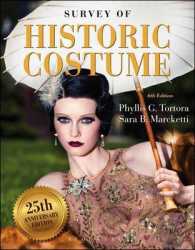Full Description
Crime and Everyday Life, Fifth Edition, offers a bold approach to crime theory and crime reduction. The text shows how crime opportunity is a necessary condition for illegal acts to occur. The authors offer realistic, often common-sense, ways to reduce or eliminate crime and criminal behaviour in specific settings by removing the opportunity to complete the act. Using a clear and engaging writing style, author Marcus Felson and new co-author Mary Eckert talk directly to the student about criminal behaviour, the routine activity approach, and specific crime reduction ideas. The authors emphasize how routine daily activities set the stage for illegal acts -- offering fascinating new ideas and examples not presented in earlier editions. Most importantly, this book teaches the student how to think about crime, and then do something about it.
Contents
Preface to the Fifth EditionAcknowledgmentsAbout the AuthorsChapter 1: Eight Fallacies about CrimeThe Dramatic FallacyThe Cops and Courts FallacyThe Not-Me FallacyThe Innocent- Youth FallacyThe Ingenuity FallacyThe Organized Crime FallacyThe Big Gang FallacyThe Agenda FallacyChapter 2: The Chemistry for CrimeRisky SettingsStages of a Criminal ActFirst Three Elements of a Criminal ActEck's Crime TrianglePredatory CrimesCalming the Waters and Looking after PlacesHot ProductsThe General Chemistry of CrimeChapter 3: Offenders Make DecisionsThe Decision to Commit a CrimeOffenders Respond to Everyday CuesOdd and Bizarre CrimesChapter 4: How Violence EruptsMaking Students Angry in a LabIn Real LifeFights vs. Predatory AttacksViolent DecisionsIt Might Not Work Out WellChapter 5: Bringing Crime to YouFour Stages in the History of Everyday LifeLife and Crime in the Convergent CityCrime and the Divergent MetropolisPopulation Density, Shifts, and Patterns of CrimeThe Great Paradox: Central City Problems Versus Self-Report EvidenceChapter 6: Teenage CrimePerspective on Youth CrimeTeenage ZigzagsChapter 7: Big Gang TheoryWhat are Gang Crimes?FundamentalsThe PuzzleThe Reason for a GangChapter 8: Crime MultipliersOne Crime Requires AnotherOne Crime Disinhibits AnotherOne Crime Advertises AnotherOne Crime Entices AnotherOne Crime Sets Up AnotherOne Crime Escalates Into AnotherOne Crime Starts A Victim ChainOne Co-Offender Attacks AnotherChapter 9: Moving Stolen GoodsThe Thief and the PublicInviting People to Steal MoreIt's Easier to Sell Stolen Goods to the PoorNew Avenues for Stolen GoodsChapter 10: Situational Crime Prevention Four Natural ExperimentsSituational Prevention and Crime AnalysisDiverse Applications of Situational Crime PreventionChapter 11: Local Design Against CrimeRemarkable Research on Local SupervisionOscar Newman's Four Types of SpaceVersions of a VillageThe Offender-Target Convergence ProcessSeven Studies in Reducing Local CrimeChapter 12: "White-Collar" CrimeHow Offenders Get to Their TargetsCrimes of Specialized AccessOrganizational RankThe Specialized-Access Crime GridChapter 13: Crime and Social ChangeTechnology, Rightly UnderstoodThe Clean Water ExampleA General Approach: Summing Up This BookHow to Think about Changing CrimeReferencesIndex







